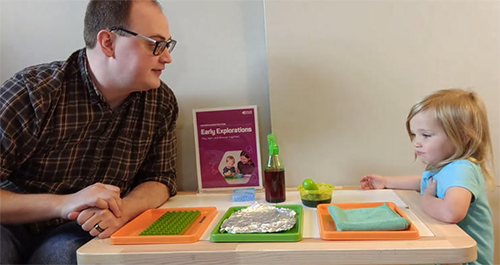
Craveology Cafe and the North Star Science Store are temporarily closed for renovation.

Very young children (ages 0–4) use these science process skills to explore and understand our world. These skills include categorizing, measuring, predicting, and problem-solving. It’s easy to make building science process skills a part of everyday play and routines. Categorize fruits and veggies into color groups at mealtimes. Cut up an image or drawing and use problem-solving skills to fit the pieces back together. Blow bubbles outside to observe (and later predict) which way the wind will take them.
Early learners can draw upon multiple skills simultaneously, using tools and exploration to inform categorization, prediction, and observation. Practicing science process skills early and often is important for children’s brain development. Research shows that when children practice science process skills at an early age, they’re better able to ask questions, draw and revise conclusions, and identify or replicate patterns later in their development.